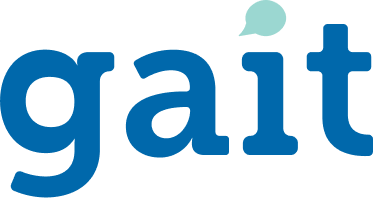Exploring the use of video games to treat dyslexia
Dyslexia is a language-based learning disability and is often severe enough to make it difficult for children to succeed academically. Treatment for language and reading impairments by speech therapists and reading specialists is often a slow, long, expensive, and frustrating experience for professionals, parents, and children.
Now, scientists are using technologies such as functional magnetic resonance imaging (fMRI) to better understand the impairments in the dyslexic brain. Researchers at Yale University, for instance, have found that people with dyslexia have abnormal connections between brain regions. As a result, they must rely on alternate brain circuits for reading and use laborious “sounding-out” strategies to read.
Other research has pinpointed specific brain regions linked to dyslexia. One of those pioneering researchers is psychologist and cognitive neuroscientist Paula Tallal, PhD, at Rutgers University. Using fMRI, she found those with dyslexia have decreased activity in the brain’s language-critical left temporoparietal region during phonological processing. Further studies showed that unlike children who are not impaired, children with dyslexia didn’t show activation in the left prefrontal cortex when distinguishing between rapid and slow acoustic stimuli.
Using the findings from brain imaging, Tallal teamed up with neuroscientist Michael Merzenich, PhD, of the University of California, San Francisco, to develop neuroplasticity-based computerized video games that can “rewire” the brains of children with this form of dyslexia and activate those areas of the brain critical to reading skills. With intensive remedial training, their brains begin to function more like those of normal readers.
The video training program, called Fast ForWord, provides intensive, highly individualized cross-training across a large number of attention, processing, cognitive, linguistic, and reading skills, all of which are vital for academic success. For example, in one of the games, a child earns points by distinguishing the sounds “ba” from “pa.” When a child masters the task, the game adjusts its playing level so the child is challenged on a more advanced level the next
day, all while being monitored via the internet by a professional. Other games are designed to improve the speed of brain processing and also train children in the rules of English grammar. The result: Treatment effects that formerly required years of intervention are reduced to a few weeks.
A groundbreaking 2003 study using fMRIs by Elise Temple, PhD, of Dartmouth University, with Tallal and other colleagues, showed changes in brain function in children with dyslexia after using the computer program. The study found increased activation in multiple brain regions during phonological processing, as well as significantly improved language and reading.
Meanwhile, other researchers are exploring the use of action-packed video games for treating dyslexia. Although researchers believe impairment in auditory processing is the primary factor underlying dyslexia, other deficits such as problems in attention may also play a role.
Scientists at Oxford University, for instance, discovered that people with dyslexia showed delayed reactions when shifting their attention from sights to sounds. The researchers suggested that fast-paced action video games—rather than games tailored specifically for language learning—might help dyslexics improve reaction times. And Italian researchers reported in 2013 that action video game training improved attention abilities in dyslexic people. That improvement translated to better reading abilities, they found.
Significance
An estimated 13% to 14% of the school-aged population suffers from dyslexia, according to the International Dyslexia Association. Untreated, the disorder can have lasting effects on
well-being. The National Center for Learning Disabilities reports that people with learning disorders, including dyslexia, have lower high school graduation rates, lower college attendance rates, and higher rates of unemployment than people in the general population.
New psychological knowledge and neuroscience-based learning methods, combined with new technology, are leading to applications that enhance the quality of life for children with
language and reading problems such as dyslexia. Additionally, money and resources are saved when a child is able to become proficient in English and read at the appropriate grade level.
Practical application
More than half a million students have used the Fast ForWord program in thousands of schools nationwide, and thousands of private practice professionals have also used the program in their clinics.
Meanwhile, psychologists and others are continuing to integrate new findings in neuroscience to develop other novel approaches to treat reading disorders.
Article:
Bavelier, D., Green, C.S., and Seidenberg, M.S. (2013). Cognitive development: Gaming your way out of dyslexia? Current Biology, 23(7), 282–283.
Finn, E.S., Shen, X., Holaha, J.M., Scheinost, D., Lacadie, C., Papademetris, X., Shaywitz, S.E., Shaywitz, B.A., and Constable, R.T. (2013). Disruption of functional networks in dyslexia: A whole-brain, data-driven analysis of connectivity. Biological Psychiatry, Epub ahead of print.
Franceschini, S., Gori, S., Ruffino, M., Viola, S., Molteni, M., and Facoetti, A. (2013).
Action video games make dyslexic children read better. Current Biology, 23(6), 462–466.
Harrar, V., Trammam, J., Perez-Bellido, A., Pitt, A., Stein, J., and Spence, C. (2014). Multisensory integration and attention in developmental dyslexia. Current Biology, 24(5), 531–535.
Holly Fitch, R., & Tallal, P. (2003). Neural mechanisms of language-based learning impairments: Insights from human populations and animal models. Behavior and Cognitive Neuroscience Reviews, 2, 155–178.
Tallal, P., & Benasich, A. A. (2002). Developmental language learning impairments.
Development and Psychopathology, 14, 559–579.
Temple, E., Deutsch, G.K., Poldrack, R.A., Miller, S.L., Tallal, P., Merzenich, M.M. & Gabrieli,
J. (2003). Neural deficits in children with dyslexia ameliorated by behavioral remediation: Evidence from functional MRI. Proceedings of the National Academy of Sciences, 100, 2860–2865.


Recent Comments